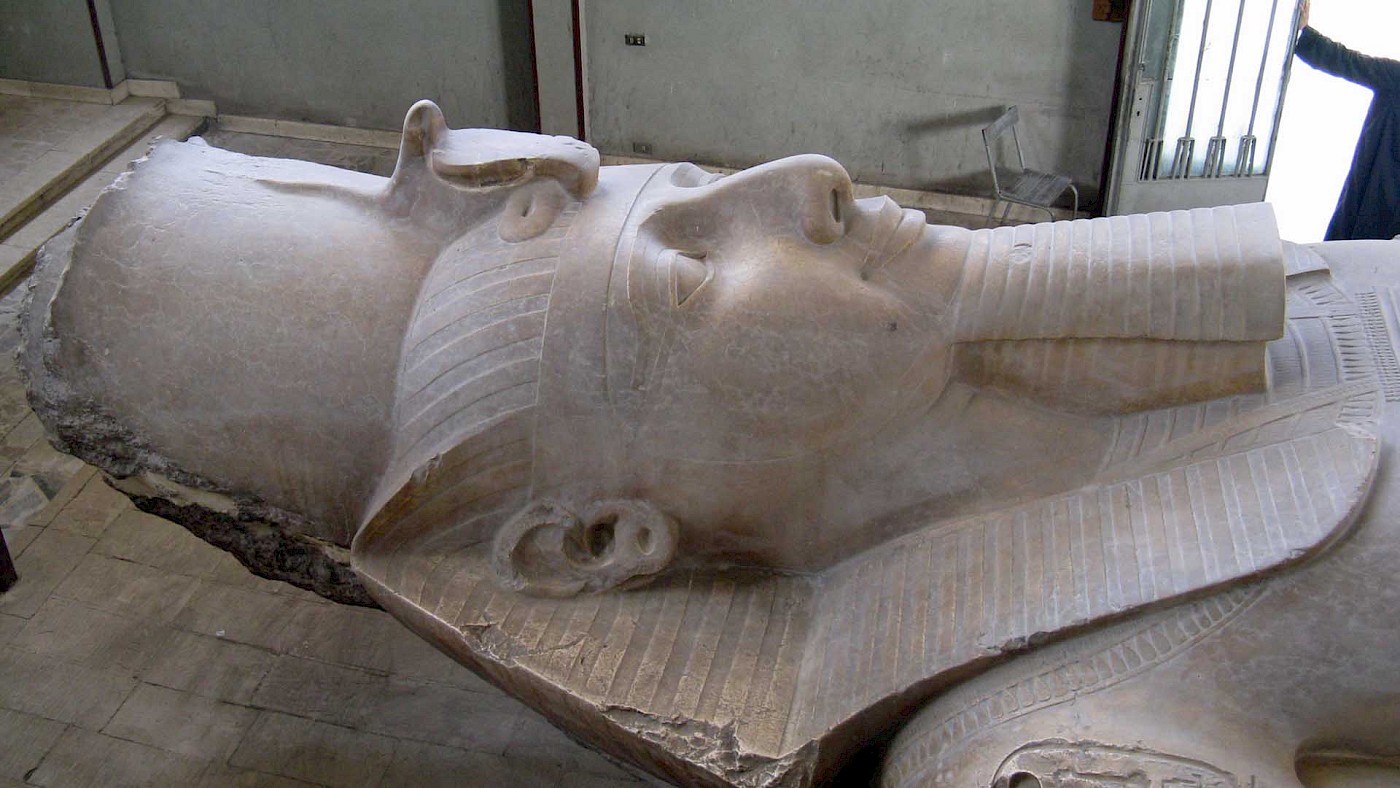If you visit Cairo, the capital city of Egypt, you are close to a number of important archaeological sites that you can visit in a single day. One of these sites centres on the remains of the ancient city of Memphis.
Memphis was the ancient capital of Aneb-Hetch, the first nome (district) of Lower Egypt. The ruins are located just 20km south of Giza, where you can admire the Sphinx and the famous pyramids. Memphis was the capital of Egypt during the Old Kingdom (ca. 2686 BC–ca. 2181 BC), but remained important afterwards. Later kings would often construct monuments in this ancient capital, including Ramesses II (r. 1279–1213 BC), perhaps better known as “Ramesses the Great”.
In fact, a large number of sculptures representing Ramesses the Great have been discovered at Memphis. Among the most impressive of these is the statue shown in the picture at the top of this article. It’s a monumental statue carved from limestone and measuring about 10 metres in length. Italian explorer Giovanni Battista Caviglia (1770–1845) discovered it near the southern gate of the temple of Ptah in 1820. The statue is displayed on its back because the feet and base are broken off.
In the nineteenth century, the statue had been offered to various people and institutions abroad, including the British Museum, who all declined because of the huge costs involved in shipping the statue. It seems doubtful in any case that the statue could have been transported intact, and so it’s a good thing that it remained in Egypt. The museum that currently houses the statue was built specifically to protect it. You can climb some stairs inside and walk around the statue at a higher level, giving you an excellent vantage point to admire it from different angles.
Originally, the statue was one of a pair. The second one was also found by Caviglia in 1820. It was restored to its full height in the 1950s. Originally, it was displayed in the Bab Al-Hadid square in Cairo, which was then renamed “Ramses Square”. In 2006, it was moved temporarily to a location in Giza. It is supposed to be moved again to the entrance of the new Grand Egyptian Museum, scheduled to be opened in 2018.
